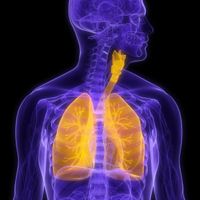Article
No Absence of Key Antiviral Mechanism in Asthmatics
Author(s):
Because a key antiviral defense mechanism is present in asthmatics, another defect in their immune system must explain their difficulty combating respiratory viruses, according to researchers from Washington University in St. Louis.
Because a key antiviral defense mechanism is present in asthmatics, another defect in their immune system must explain their difficulty combating respiratory viruses, according to researchers from Washington University in St. Louis (WUSTL).

Due to an ongoing debate involving asthmatics’ issues fending off airway viruses, researchers have zeroed in on interferons, proteins that are located in the airways and released by cells as a defense against viruses, a WUSTL news release pointed out.
However, Michael J. Holtzman, MD, the senior author and the Selma and Herman Seldin Professor of Medicine, claimed they found no disparity in interferon (IFN) levels between individuals with and without asthma.
For their study recently published in the Journal of Allergy and Clinical Immunology, investigators analyzed the effects of the influenza A virus (IAV) and respiratory syncytial virus (RSV) infections to airway cells on 55 patients with mild to severe asthma (n = 11) and 7 controls without asthma.
In doing so, the authors noted asthmatics’ viral loads doubled their nonasthmatic counterparts. However, there was no difference between the two groups’ FNB1, 2′-5′-oligoadenylate synthetase 1, or myxovirus (influenza virus) resistance 1mRNA levels.
“Even though we showed both groups made similar amounts of interferon, we recognized that there might be a difference in effectiveness, a difference in how well it triggered downstream events necessary to fighting the virus,” Holtzman explained.
The researchers then compared the genes that deploy the interferon, which they found to be “remarkably similar”. Furthermore, the writers witnessed that the patients were at identical points in fighting off the virus at a given time, the news release mentioned.
“Whatever is causing asthmatics and non-asthmatics to experience differences in how well they recover from these respiratory infections — why patients with asthma are more likely to end up in the hospital, for example — this interferon mechanism is not the deciding factor based on what we’ve seen so far,” Holtzman said.
Moving forward, Holtzman and his team intends to look into this phenomenon further. Right now, they believe one possible explanation is that viruses have the capacity to inflame the airway, making not only asthmatics disproportionately susceptible, but sufferers of other lung conditions, such as chronic obstructive pulmonary disease (COPD).
2 Commerce Drive
Cranbury, NJ 08512
All rights reserved.





